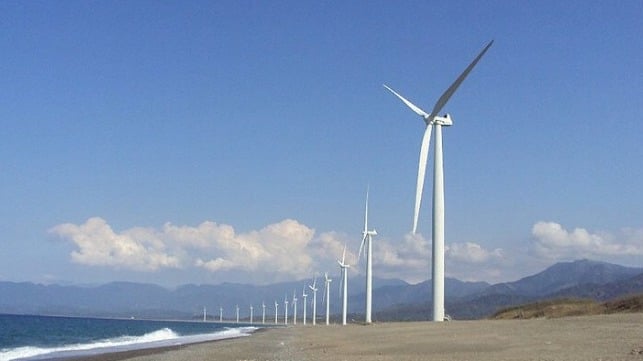Philippines and CIP Agree to First Foreign-Owned Offshore Wind Farms

The Philippines Department of Energy signed contracts with Copenhagen Infrastructure New Markets Fund, an affiliate of Danish fund manager Copenhagen Infrastructure Partners, for what will become the country’s first wholly foreign-owned offshore wind projects. The contracts call for three wind farms with a combined capacity of 2,000 MW to be built by the Danish organization and run under 25-year operating licenses. The county has onshore wind power but is yet to start its first offshore project.
The Philippines recently lifted foreign ownership restrictions on renewable energy development. It is part of a program outlined by President Ferdinand Marcos, Jr. to accelerate the development of renewable sources of energy for the country. Niels Holst, Partner in CIP and head of CINMF, said the removal of foreign ownership restrictions on renewable energy projects in the Philippines in 2022 was an important development for his company as it gave them positive signals to launch investments in the country.
“We are pleased with the entry of CINMF, a dedicated fund manager with greenfield renewable energy investments and one of the global leaders in offshore wind,” said Energy Secretary Raphael P.M. Lotilla. “They will be bringing in financial muscle and technological heft and will be working with Filipino partners throughout the construction and operation phases.”
The three projects are to be developed in Camarines Norte and Camarines Sur, offshore of Northern Samar, and offshore of Pangasinan and La Union. Once implemented, the three projects are expected to create around 4,500 jobs during the development and operations period, generate enough power to supply about one million households, and offset about 2.9 million tons in CO2 emissions per year.
The Philippines and the Danish Government have a long-standing cooperation in the development of wind power in the country. The 25 MW Bangui Bay Wind Power Project, developed onshore in 2004 by the Northwind Power Development Corporation in Bangui, Ilocos Norte, was partly funded by the Danish Government through the Danish International Development Assistance (DANIDA). It was a landmark project that paved the way for developing onshore wind power projects in the country and the Southeast Asian Region.
Danish Ambassador Melbin said that the Filipino people deserve more reliable and cheaper electricity. Introducing large-scale renewable energy is the fastest way to achieve this he said.
The Philippines currently has no installed offshore wind operations. The World Bank estimates there is a potential for more than 178 GW of offshore wind in the country. Working with the World Bank, the Philippines Department of Energy last year released an initial plan for offshore wind development.
One of the country’s main power distributors, Aboitiz Power, is currently undertaking a feasibility study exploring the potential for up to 3 GW of offshore wind by 2040. They are expected to complete the study by mid-year.
The Philippines Department of Energy said to date, that 57 Offshore Wind Service Contracts have been awarded with a total potential capacity of about 42,000 MW that will be developed. The DOE targets to bring the renewable energy share in the power generation mix to 35 percent by 2030 and 50 percent by 2040 from the current 22 percent. The World Bank report set out a low estimate of just over 5 percent from offshore wind and a high growth potential to reach 40 percent of the country’s power supply from offshore sources by 2050.
Top photo of Bangui wind farm by Paolo Dala - CC BY-SA 2.0
